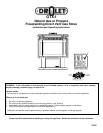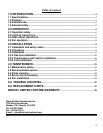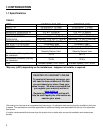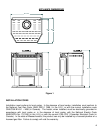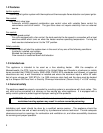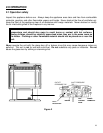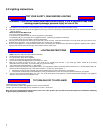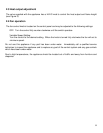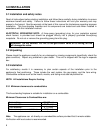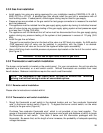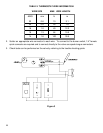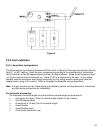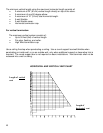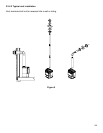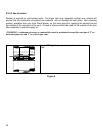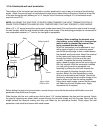
5
1.2 Features
Ignition system:
Standing pilot ignition system with thermopile and thermocouple flame detection and piezo igniter.
Gas control:
Gas control valve type:
Automatic millivolt powered combination gas control valve with variable flame control for
convenience and on/off switch. The gas valve does not require electricity from an external
source.
Fan control:
Variable speed control:
For units equipped with a fan control, the knob controls the fan speed in connection with a heat
sensitive switch which turns on when the heater reaches operating temperature. Turning the
knob counter-clockwise turns it to the “Off” position.
Safety controls:
A safety switch will shut the system down in the event of any one of the following conditions:
Incorrectly installed vent system
Blocked vent causing flue spillage
Flow reversal or sustained down draft situation
1.3 Intended use
This appliance is intended to be used as a free standing heater. With the exception of
Massachusetts, the GTX-I may be installed in the United States and Canada in a bedroom or mobile
home provided that CR89-00 and/or ANSI A225.1/NFPA 501A standards are followed, all required
clearances are met, a wall thermostat is installed and where the maximum input is within 50 cubic
feet of room volume per 1000 BTU/hr, (i.e.1500 minimum cubic feet) and the stove must be hooked
up to a Simpson GS Dura Vent or Security Chimneys International (Secure Vent) 4” x 6 5/8” venting.
1.4 General safety
The appliance must be properly connected to a venting system in accordance with local codes. This
unit must not be connected to a chimney or flue serving any other appliance. It is equipped with a
safety control system to protect against improper venting of flue products.
WARNING: Operation of this unit when not connected to a properly installed and
maintained venting system may result in carbon monoxide poisoning.
Installation and repair should be done by a qualified service person. The appliance should be
inspected before use and at least annually by a professional service technician. Provide adequate
clearances around air openings, for combustion and ventilation air, and allow accessibility clearance
for servicing and proper operation.



